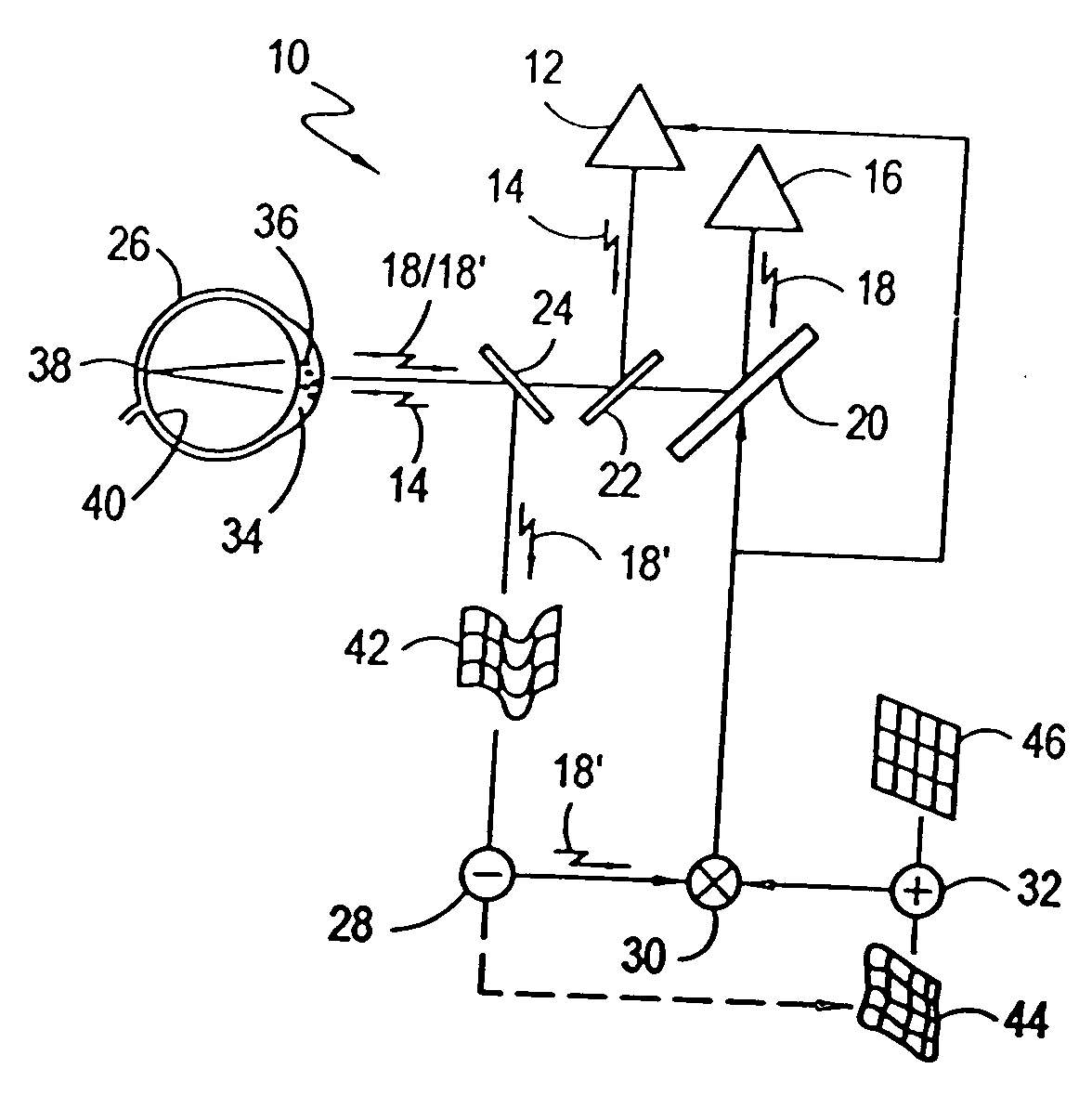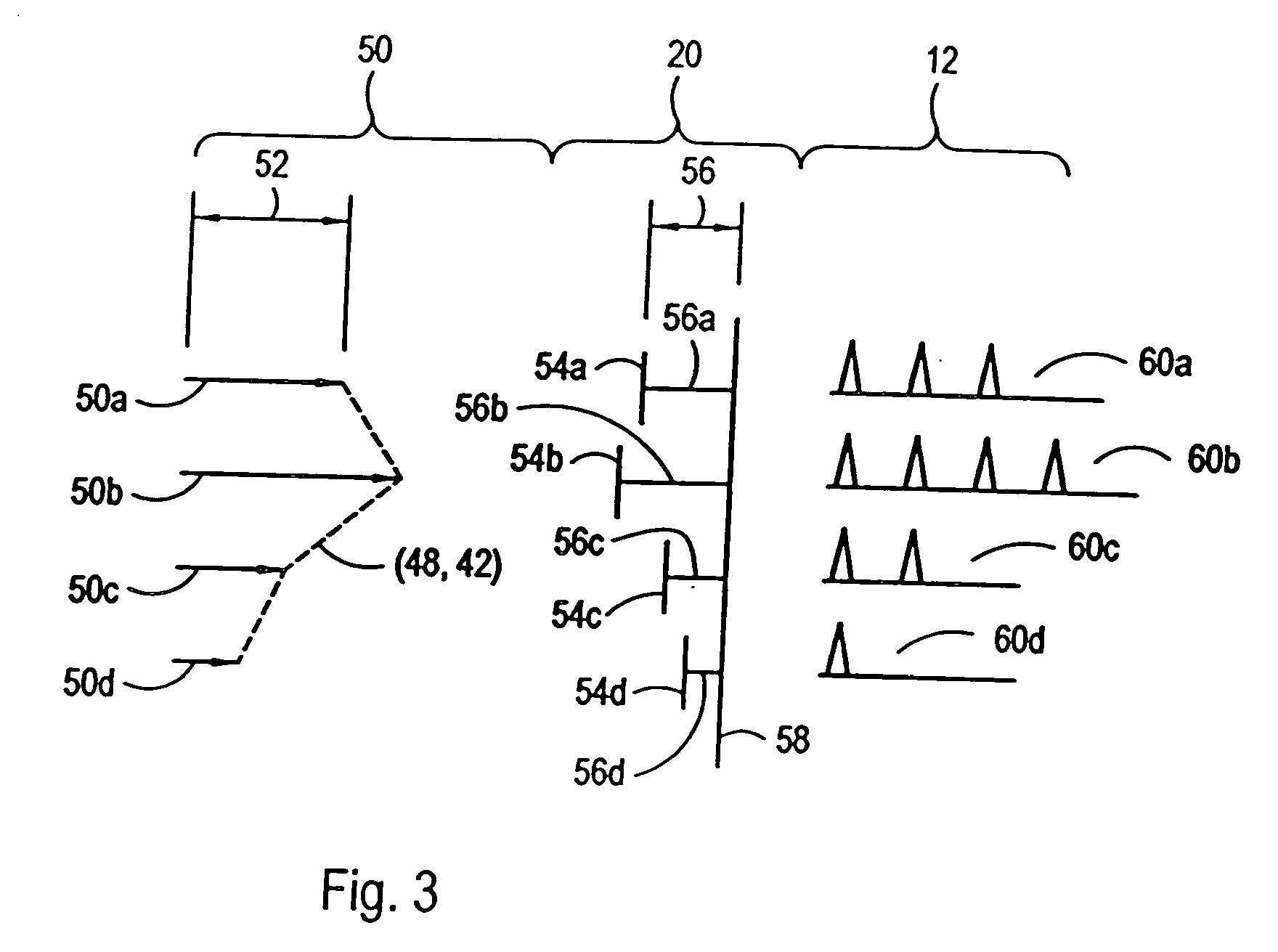Closed loop control for intrastromal wavefront-guided ablation with fractionated treatment program
- Summary
- Abstract
- Description
- Claims
- Application Information
AI Technical Summary
Benefits of technology
Problems solved by technology
Method used
Image
Examples
Embodiment Construction
[0032] Referring initially to FIG. 1, a closed-loop system for intrastromal photoablation of corneal tissue in accordance with the present invention is shown and is generally designated 10. In detail, the components of system 10 include a source 12 for generating an ablation laser beam 14, and a source 16 for generating a diagnostic laser beam 18. Further, the system 10 includes an active, multi-facet mirror 20, a beam splitter 22 and a beam splitter 24. More particularly, the active mirror 20 is preferably of a type disclosed in U.S. Pat. No. 6,220,707 which issued to Bille for an invention entitled “Method for Programming an Active Mirror to Mimic a Wavefront” and which is assigned to the same assignee as the present invention. As shown, the active mirror 20 and the beam splitters 22 and 24 direct the diagnostic laser beam 18 from diagnostic laser source 16 toward an eye 26. Likewise, the beam splitters 22 and 24 are used to direct the ablation laser beam 14 from the ablation lase...
PUM
 Login to View More
Login to View More Abstract
Description
Claims
Application Information
 Login to View More
Login to View More - R&D
- Intellectual Property
- Life Sciences
- Materials
- Tech Scout
- Unparalleled Data Quality
- Higher Quality Content
- 60% Fewer Hallucinations
Browse by: Latest US Patents, China's latest patents, Technical Efficacy Thesaurus, Application Domain, Technology Topic, Popular Technical Reports.
© 2025 PatSnap. All rights reserved.Legal|Privacy policy|Modern Slavery Act Transparency Statement|Sitemap|About US| Contact US: help@patsnap.com



